Abstract
OBJECTIVES: This study evaluated the impact of case management on client retention in treatment and short-term relapse for clients in the publicly funded substance abuse treatment system. METHODS: A retrospective cohort design was used to study clients discharged from the following four modalities in 1993 and 1994: short-term residential (3112 clients), long-term residential (2888 clients), outpatient (7431 clients), and residential detox (7776 clients). Logistic regression models were used to analyze the impact of case management after controlling for baseline characteristics. RESULTS: The odds that case-managed clients reached a length of stay previously identified as associated with more successful treatment were 1.6 (outpatient programs) to 3.6 (short-term residential programs) times higher than the odds for non-case-managed clients. With the exception of outpatient clients, the odds of case-managed clients' being admitted to detox within 90 days after discharge (suggesting relapse) were about two thirds those of non-case-managed clients. The odds of case-managed detox clients' transitioning to post-detox treatment (a good outcome) were 1.7 times higher than the odds for non-case-managed clients. CONCLUSIONS: Case management is a low-cost enhancement that improves short-term outcomes of substance abuse treatment programs.
Full text
PDF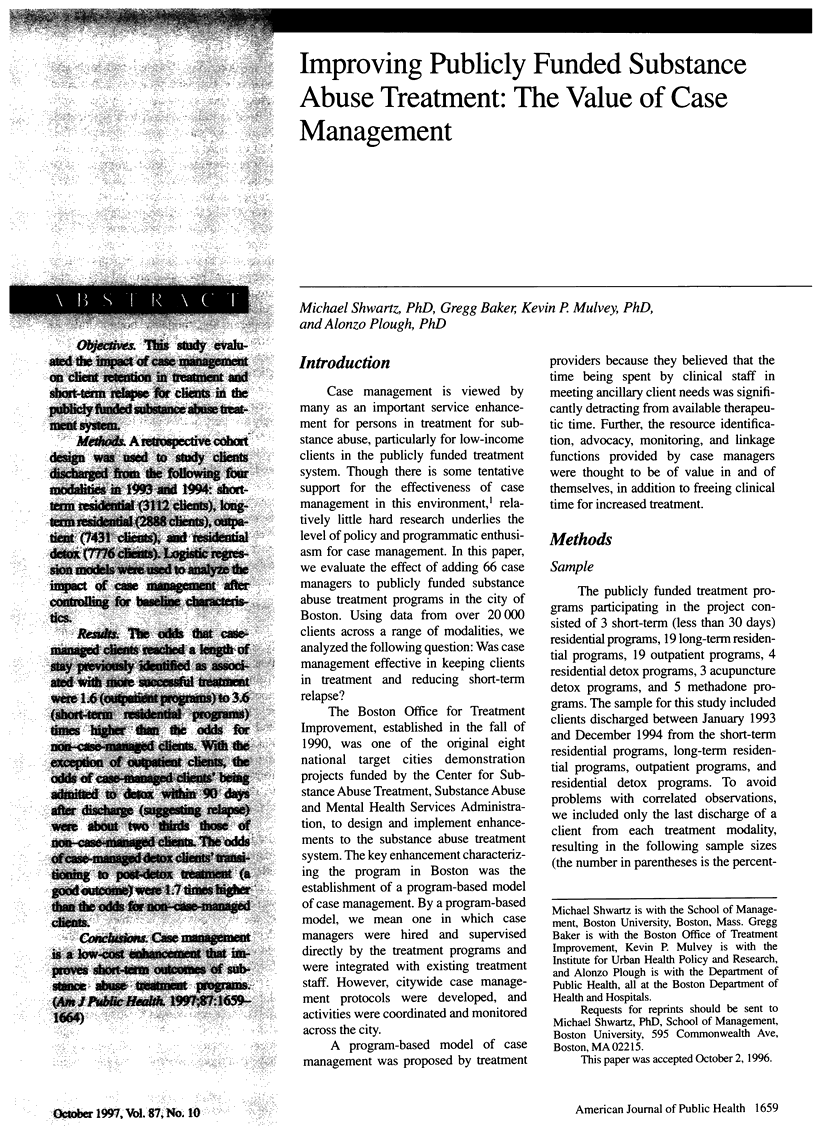

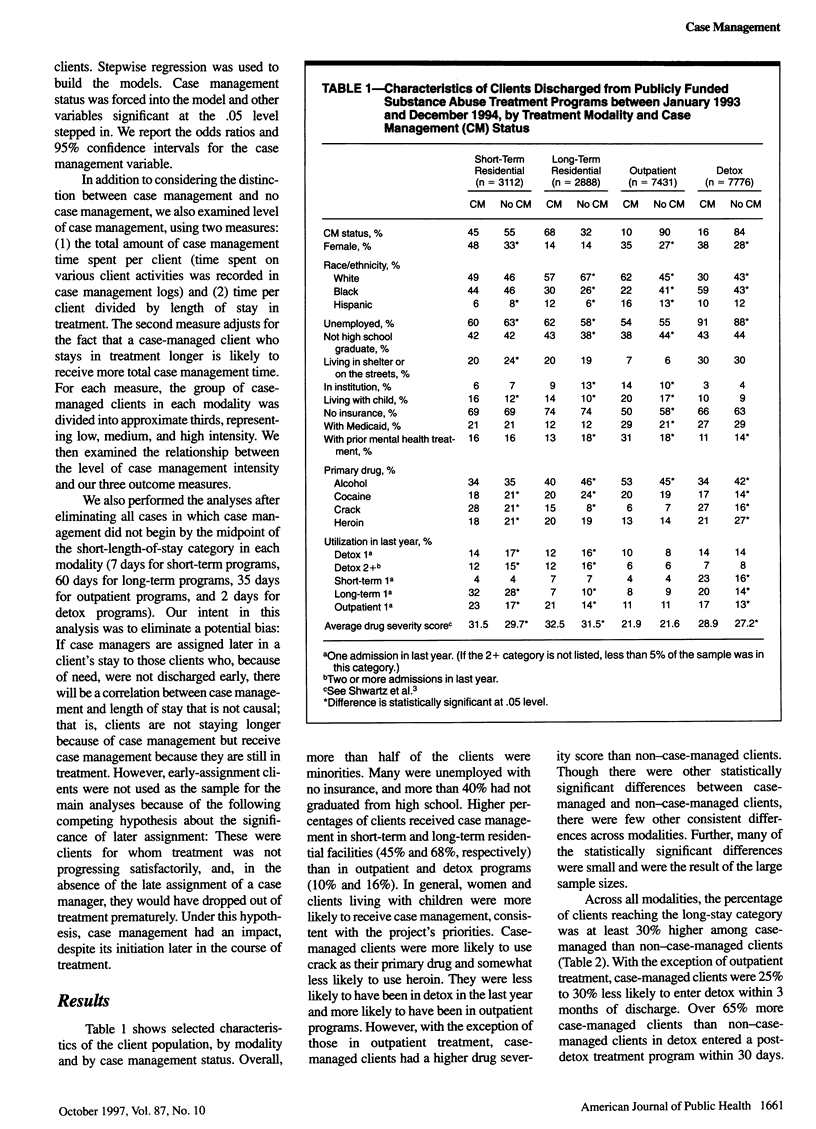
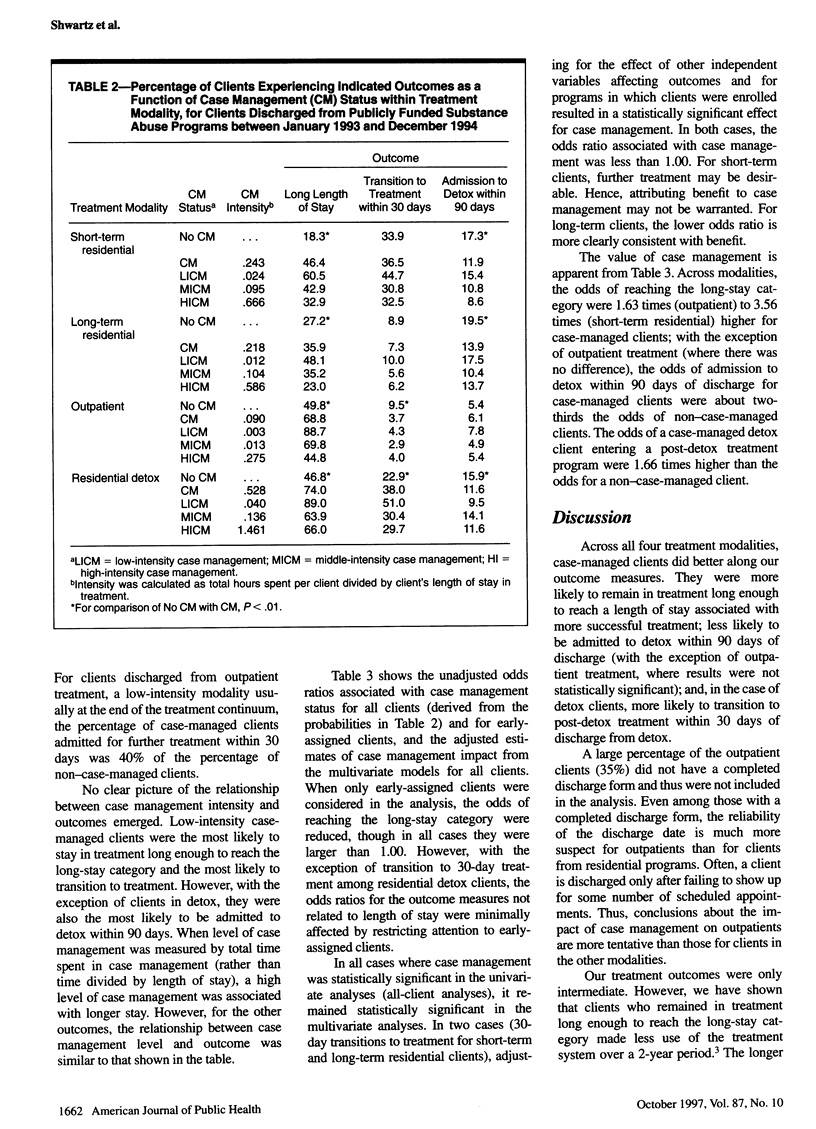
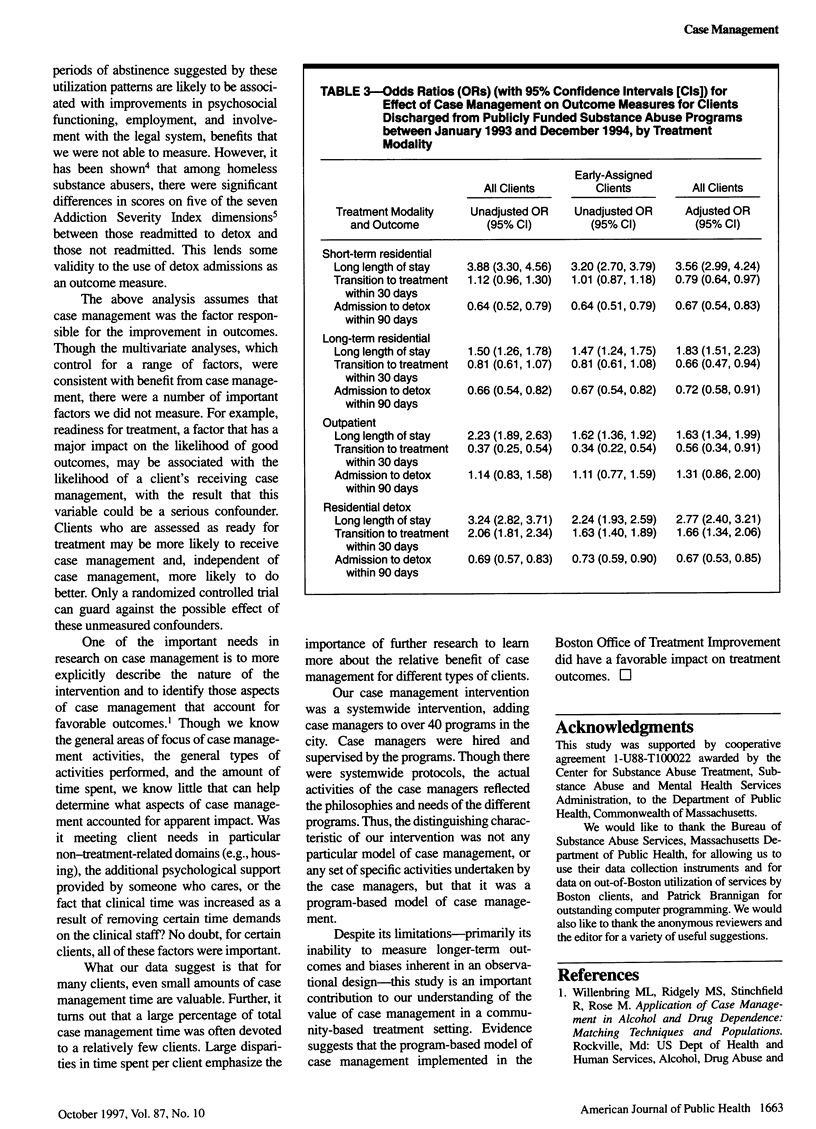
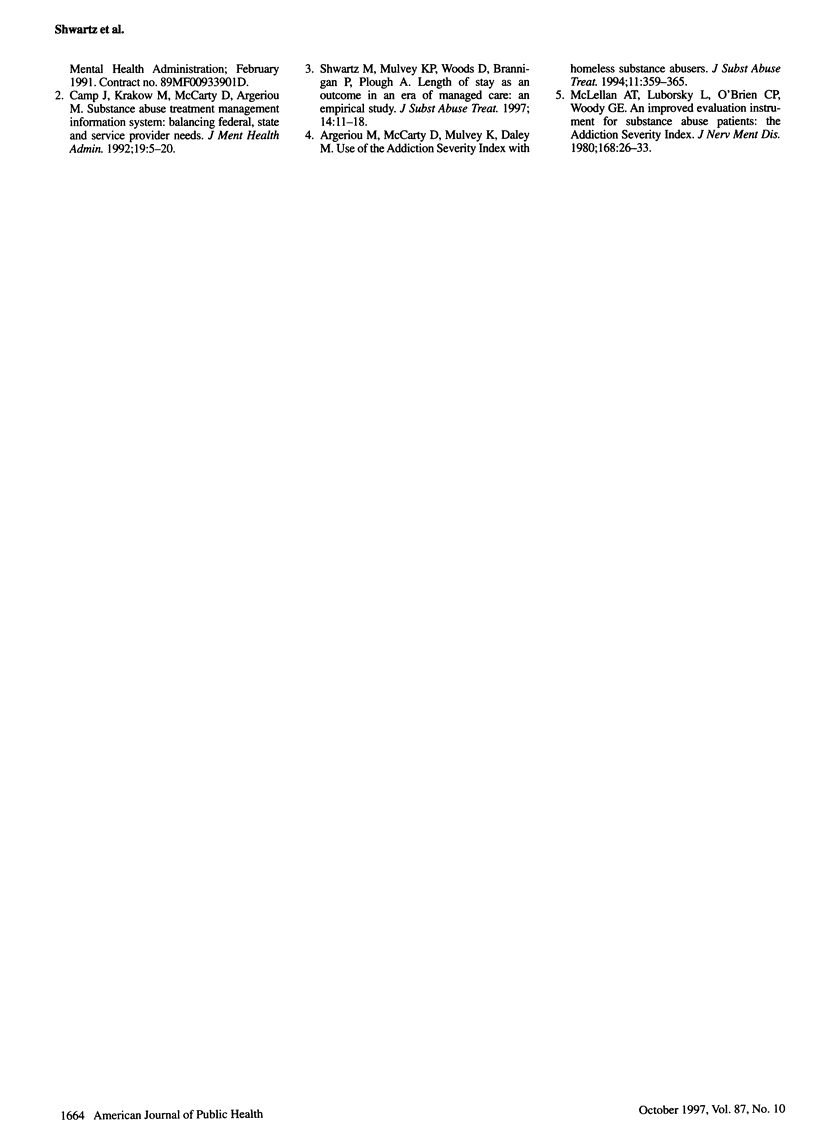
Selected References
These references are in PubMed. This may not be the complete list of references from this article.
- Argeriou M., McCarty D., Mulvey K., Daley M. Use of the Addiction Severity Index with homeless substance abusers. J Subst Abuse Treat. 1994 Jul-Aug;11(4):359–365. doi: 10.1016/0740-5472(94)90046-9. [DOI] [PubMed] [Google Scholar]
- Camp J. M., Krakow M., McCarty D., Argeriou M. Substance abuse treatment management information systems: balancing federal, state, and service provider needs. J Ment Health Adm. 1992 Spring;19(1):5–20. doi: 10.1007/BF02521303. [DOI] [PubMed] [Google Scholar]
- McLellan A. T., Luborsky L., Woody G. E., O'Brien C. P. An improved diagnostic evaluation instrument for substance abuse patients. The Addiction Severity Index. J Nerv Ment Dis. 1980 Jan;168(1):26–33. doi: 10.1097/00005053-198001000-00006. [DOI] [PubMed] [Google Scholar]
- Shwartz M., Mulvey K. P., Woods D., Brannigan P., Plough A. Length of stay as an outcome in an era of managed care. An empirical study. J Subst Abuse Treat. 1997 Jan-Feb;14(1):11–18. doi: 10.1016/s0740-5472(96)00095-5. [DOI] [PubMed] [Google Scholar]


